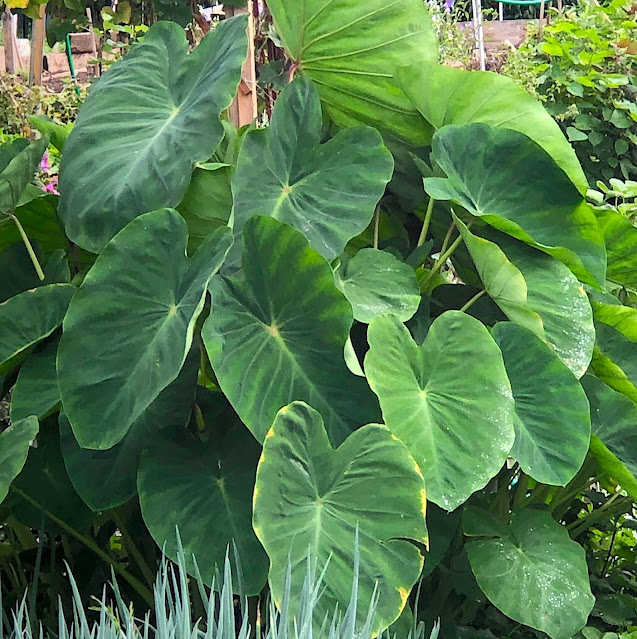In 2021 I worked with two women who were opposed to using
botanical names on designs, plant orders, or in the office. In fact they
believed the practice was "stupid" as (they insisted) most nursery people did not know the
scientific or botanical names of plants, shrubs and trees, so using them was a
waste of time. I did not and do not agree. On one occasion I pointed out that
Aster cordifolius and Aster diravicatus were different species from and not the same as Big-leaf aster. My coworkers were not amused.
Maybe all nursery personnel should be expected to identify plants by their botanical names as well as by their common names. Common names are in many cases, misleading and confusing. Many are disrespectful and some have racially charged or ethnically biased origins. The dumbing-down attitude of botanical names is regressive and does not promote excellence or professionalism in the industry. But dumbing-down seems to be trendy in other areas too. One case in point is the misuse of the name 'callaloo' to describe plants in the Amaranthus family.
The word 'Callaloo' is ingrained in the history of Trinidad and Tobago. In fact, Callaloo is the name of the national dish of the country. The dish has its origins in West Africa, the place of birth of millions of enslaved who were bound and transported across oceans to work on sugar plantations in the Caribbean. As a vital part of the Sunday lunch, callaloo is made with young velvety leaves of Colocasia esculenta, okra, hot peppers, pieces of salted meat and crab, all simmered in coconut milk. The combination of the softened leaves and okra make for a silky consistency in this high-protein and fiber recipe. The result is a rich, flavorful and complex dish of a viscous and slightly soupy consistency. Callaloo is usually served over boiled rice and accompanied by stewed chicken (another Trinidad and Tobago original star), or macaroni pie. It goes well with coucou, a polenta-like dish of ground corn, and is often served alongside stewed fish.
Creamy, mouth-watering goodness, that is Trinidad Callaloo
Because of the complex flavors of the dish, the word 'callaloo' itself holds many connotations and it is often
used as descriptive noun. We say that is “real callaloo” when things or
situations are confused, a mess or mixed up, or where there is political or government discord. We also use the word to point out extreme hybridity in persons or groups of multiple races or ethic backgrounds.
In Trinidad and
Tobago Colocasia esculenta is called 'dasheen bush'. The underground tuberous root system
of the plant is called
‘dasheen’ and is similar to taro. Dasheen root is starchy and can be boiled and eaten like a potato. Some cultivars are blue in color when cooked.
Amaranthus viridisi is the plant used for making Jamaican Callaloo.
In the country of Jamaica, callaloo is a very different dish. Jamaican callaloo is made with the leaves of Amaranth viridis, seasoned with onions and peppers. This same Amaranth virdis is also an agricultural crop in Trinidad and Tobago but it is cooked differently, with coconut milk and small pieces of salted meat. Amaranthus viridis is what the people of Trinidad and Tobago call spinach. Amaranthus is eaten cooked or raw on various Caribbean islands and African and Asia countries. However, Amaranthus viridis is easily confused with numerous other species and cultivars of amaranth, some of which are aggressively seeding annual invasive species and pigweed that plague gardeners in the northeast USA.
To compound matters, Brazilians call Amarantnus viridis by the common name of cararu. It is most likely because of this South American name that Jamaicans adopted the similar sounding name of callaloo.
Yes, I get it. The word callaloo is a bit of a tongue twister and the recently woke or those just discovering it think it is so cool to repeat it. Consequently, I witness people pointing to common pigweed, incorrectly calling the plant callaloo. Ugh!! Even worse is the habit of referring to any plant in the Amaranthus genus as callaloo. I have heard persons referring to Amaranthus cruentus 'Red Hopi' as Red Callaloo, or Celosia as Flowering Callaloo.
 |
| Amaranthus tricolor |
 |
| Amaranthus caudatus 'Dreadlocks' |
So the next time you come across a plant in the Amaranthus family, and notice that the word 'Callaloo' is at the tip of your tongue, STOP!! Think for a moment. Just as Trinbagonians refer to the Colocasia leaves used to make their beloved callaloo dish as 'callaloo bush', 'dasheen bush' or 'baji', it would be more accurate, judicious and respectful for horticulturist, growers and indeed the world at large to do the same when using the common name for Amaranthus viridis. Please refer to the amaranthus species used to make Jamaican callaloo as (Jamaican) 'callaloo bush'. Just saying.
Try some Trinidad Callaloo. You can find numerous recipes online. Try some Jamaican Callaloo too. Enjoy the unique flavors produced by vastly different plants, from very different cultures. Accurately naming their respective plant bases and knowing their respective common names is just one way to show your appreciation for the diversity that exists within ethnic groups, and to display cultural respect.








